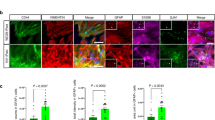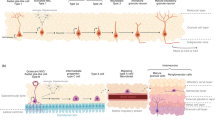Abstract
PBX1 expression has been found to be significantly reduced in nigrostriatal neurons of PD patients, but the effect of PBX1 on ROS and apoptosis in nigrostriatal dopamine neurons is not yet known. This paper aimed to explore whether PBX1 could be involved in the development of PD. The construction of the in vitro PD model was followed by the determination of PBX1 expression. Then, PBX1 was overexpressed to observe the changes in the cell viability, TH expression, oxidative stress and apoptosis of the model. The mitochondrial membrane potential analysis and detection of PINK1/parkin expression were also conducted. To observe whether FOXA1 was involved in the mechanism, its expression was measured, and its association with PBX1 was determined. Subsequently, FOXA1 was silenced to observe whether PBX1 did effects on dopaminergic neuron via FOXA1. PBX1 attenuates 6-OHDA-induced dopaminergic neuronal cell injury and oxidative stress, and apoptosis. Its overexpression ameliorates mitochondrial dysfunction in dopaminergic neurons and upregulates the expression of PINK1/parkin. PBX1 could combine with FOXA1 and affects 6-OHDA-induced dopaminergic neuronal damage and regulates PINK1/PARKIN expression via FOXA1. To conclude, PBX1 attenuates 6-OHDA-induced oxidative stress and apoptosis in dopaminergic neurons, and affected PINK1/PARKIN expression via FOXA1, which indicates the great potential of the PBX1 in prevention against PD.








Similar content being viewed by others
Data availability
The datasets used and/or analyzed during the current study are available from the corresponding author on reasonable request.
References
Ao X, Ding W, Ge H, Zhang Y, Ding D, Liu Y (2020) PBX1 is a valuable prognostic biomarker for patients with breast cancer. Exp Ther Med 20:385–394
Barodia SK, Creed RB, Goldberg MS (2017) Parkin and PINK1 functions in oxidative stress and neurodegeneration. Brain Res Bull 133:51–59
Bougea A (2020) New markers in Parkinson’s disease. Adv Clin Chem 96:137–178
Collier TJ, Kanaan NM, Kordower JH (2017) Aging and Parkinson’s disease: different sides of the same coin? Mov Disord 32:983–990
Cooper O, Seo H, Andrabi S, Guardia-Laguarta C, Graziotto J, Sundberg M, McLean JR, Carrillo-Reid L, Xie Z, Osborn T, Hargus G, Deleidi M, Lawson T, Bogetofte H, Perez-Torres E, Clark L, Moskowitz C, Mazzulli J, Chen L, Volpicelli-Daley L, Romero N, Jiang H, Uitti RJ, Huang Z, Opala G, Scarffe LA, Dawson VL, Klein C, Feng J, Ross OA, Trojanowski JQ, Lee VM, Marder K, Surmeier DJ, Wszolek ZK, Przedborski S, Krainc D, Dawson TM, Isacson O (2012) Pharmacological rescue of mitochondrial deficits in iPSC-derived neural cells from patients with familial Parkinson’s disease. Sci Transl Med 4:141–190
Dai H, Deng Y, Zhang J, Han H, Zhao M, Li Y, Zhang C, Tian J, Bing G, Zhao L (2015) PINK1/Parkin-mediated mitophagy alleviates chlorpyrifos-induced apoptosis in SH-SY5Y cells. Toxicology 334:72–80
Ferri AL, Lin W, Mavromatakis YE, Wang JC, Sasaki H, Whitsett JA, Ang SL (2007) Foxa1 and Foxa2 regulate multiple phases of midbrain dopaminergic neuron development in a dosage-dependent manner. Development 134:2761–2769
Hirotsu Y, Hataya N, Katsuoka F, Yamamoto M (2012) NF-E2-related factor 1 (Nrf1) serves as a novel regulator of hepatic lipid metabolism through regulation of the Lipin1 and PGC-1β genes. Mol Cell Biol 32:2760–2770
Jagadeesan AJ, Murugesan R, Vimala Devi S, Meera M, Madhumala G, Vishwanathan Padmaja M, Ramesh A, Banerjee A, Sushmitha S, Khokhlov AN, Marotta F, Pathak S (2017) Current trends in etiology, prognosis and therapeutic aspects of Parkinson’s disease: a review. Acta Biomed 88:249–262
Jennings P, Limonciel A, Felice L, Leonard MO (2013) An overview of transcriptional regulation in response to toxicological insult. Arch Toxicol 87:49–72
Jiang Y, Liu F, Zou F, Zhang Y, Wang B, Zhang Y, Lian A, Han X, Liu Z, Liu X, Jin M, Wang D, Li G, Liu J (2019) PBX homeobox 1 enhances hair follicle mesenchymal stem cell proliferation and reprogramming through activation of the AKT/glycogen synthase kinase signaling pathway and suppression of apoptosis. Stem Cell Res Ther 10:268
Kamps MP, Murre C, Sun XH, Baltimore D (1990) A new homeobox gene contributes the DNA binding domain of the t(1;19) translocation protein in pre-B ALL. Cell 60:547–555
Khan AU, Akram M, Daniyal M, Zainab R (2019) Awareness and current knowledge of Parkinson’s disease: a neurodegenerative disorder. Int J Neurosci 129:55–93
Kostek B, Kaszuba K, Zwan P, Robowski P, Slawek J (2012) Automatic assessment of the motor state of the Parkinson’s disease patient—a case study. Diagn Pathol 7:18
Kriks S, Shim JW, Piao J, Ganat YM, Wakeman DR, Xie Z, Carrillo-Reid L, Auyeung G, Antonacci C, Buch A, Yang L, Beal MF, Surmeier DJ, Kordower JH, Tabar V, Studer L (2011) Dopamine neurons derived from human ES cells efficiently engraft in animal models of Parkinson’s disease. Nature 480:547–551
Kwon AT, Arenillas DJ, Worsley-Hunt R, Wasserman WW (2012) oPOSSUM-3: advanced analysis of regulatory motif over-representation across genes or ChIP-Seq datasets. G3 (bethesda) 2:987–1002
Lee WW, Jeon BS (2014) Clinical spectrum of dopa-responsive dystonia and related disorders. Curr Neurol Neurosci Rep 14:461
Liu F, Shi J, Zhang Y, Lian A, Han X, Zuo K, Liu M, Zheng T, Zou F, Liu X, Jin M, Mu Y, Li G, Su G, Liu J (2019) NANOG attenuates hair follicle-derived mesenchymal stem cell senescence by upregulating PBX1 and activating AKT signaling. Oxid Med Cell Longev 2019:4286213
Obeso JA, Rodriguez-Oroz MC, Goetz CG, Marin C, Kordower JH, Rodriguez M, Hirsch EC, Farrer M, Schapira AH, Halliday G (2010) Missing pieces in the Parkinson’s disease puzzle. Nat Med 16:653–661
Peoples JN, Saraf A, Ghazal N, Pham TT, Kwong JQ (2019) Mitochondrial dysfunction and oxidative stress in heart disease. Exp Mol Med 51:1–13
Perlmann T, Wallen-Mackenzie A (2004) Nurr1, an orphan nuclear receptor with essential functions in developing dopamine cells. Cell Tissue Res 318:45–52
Pristera A, Lin W, Kaufmann AK, Brimblecombe KR, Threlfell S, Dodson PD, Magill PJ, Fernandes C, Cragg SJ, Ang SL (2015) Transcription factors FOXA1 and FOXA2 maintain dopaminergic neuronal properties and control feeding behavior in adult mice. Proc Natl Acad Sci U S A 112:E4929-4938
Ren ZL, Wang CD, Wang T, Ding H, Zhou M, Yang N, Liu YY, Chan P (2019) Ganoderma lucidum extract ameliorates MPTP-induced parkinsonism and protects dopaminergic neurons from oxidative stress via regulating mitochondrial function, autophagy, and apoptosis. Acta Pharmacol Sin 40:441–450
Schapira AH (2011) Mitochondrial pathology in Parkinson’s disease. Mt Sinai J Med 78:872–881
Starkov AA (2008) The role of mitochondria in reactive oxygen species metabolism and signaling. Ann N Y Acad Sci 1147:37–52
Surmeier DJ (2018) Determinants of dopaminergic neuron loss in Parkinson’s disease. FEBS J 285:3657–3668
Villaescusa JC, Li B, Toledo EM, Rivetti di Val Cervo P, Yang S, Stott SR, Kaiser K, Islam S, Gyllborg D, Laguna-Goya R, Landreh M, Lonnerberg P, Falk A, Bergman T, Barker RA, Linnarsson S, Selleri L, Arenas E (2016) A PBX1 transcriptional network controls dopaminergic neuron development and is impaired in Parkinson’s disease. EMBO J 35:1963–1978
Wang Y, Shen J, Chen Y, Liu H, Zhou H, Bai Z, Hu Z, Guo X (2018) PINK1 protects against oxidative stress induced senescence of human nucleus pulposus cells via regulating mitophagy. Biochem Biophys Res Commun 504:406–414
Xi Y, Feng D, Tao K, Wang R, Shi Y, Qin H, Murphy MP, Yang Q, Zhao G (2018) MitoQ protects dopaminergic neurons in a 6-OHDA induced PD model by enhancing Mfn2-dependent mitochondrial fusion via activation of PGC-1alpha. Biochim Biophys Acta Mol Basis Dis 1864:2859–2870
Xu X, Zhou Y, Fu B, Zhang J, Dong Z, Zhang X, Shen N, Sun R, Tian Z, Wei H (2020) PBX1 promotes development of natural killer cells by binding directly to the Nfil3 promoter. FASEB J 34:6479–6492
Zamecnikova A (2011) Chromosomal translocation t(1;9)(q24;q34) in acute lymphoblastic leukemia patient involving the ABL1 gene. Leuk Res 35:e149-150
Zou J, Zhang Y, Sun J, Wang X, Tu H, Geng S, Liu R, Chen Y, Bi Z (2017) Deoxyelephantopin induces reactive oxygen species-mediated apoptosis and autophagy in human osteosarcoma cells. Cell Physiol Biochem 42:1812–1821
Author information
Authors and Affiliations
Corresponding author
Ethics declarations
Conflict of interest
The authors declare they have no competing interests.
Additional information
Publisher's Note
Springer Nature remains neutral with regard to jurisdictional claims in published maps and institutional affiliations.
Rights and permissions
About this article
Cite this article
Li, B., An, D. & Zhu, S. PBX1 attenuates 6-OHDA-induced oxidative stress and apoptosis and affects PINK1/PARKIN expression in dopaminergic neurons via FOXA1. Cytotechnology 74, 217–229 (2022). https://doi.org/10.1007/s10616-021-00518-8
Received:
Accepted:
Published:
Issue Date:
DOI: https://doi.org/10.1007/s10616-021-00518-8




